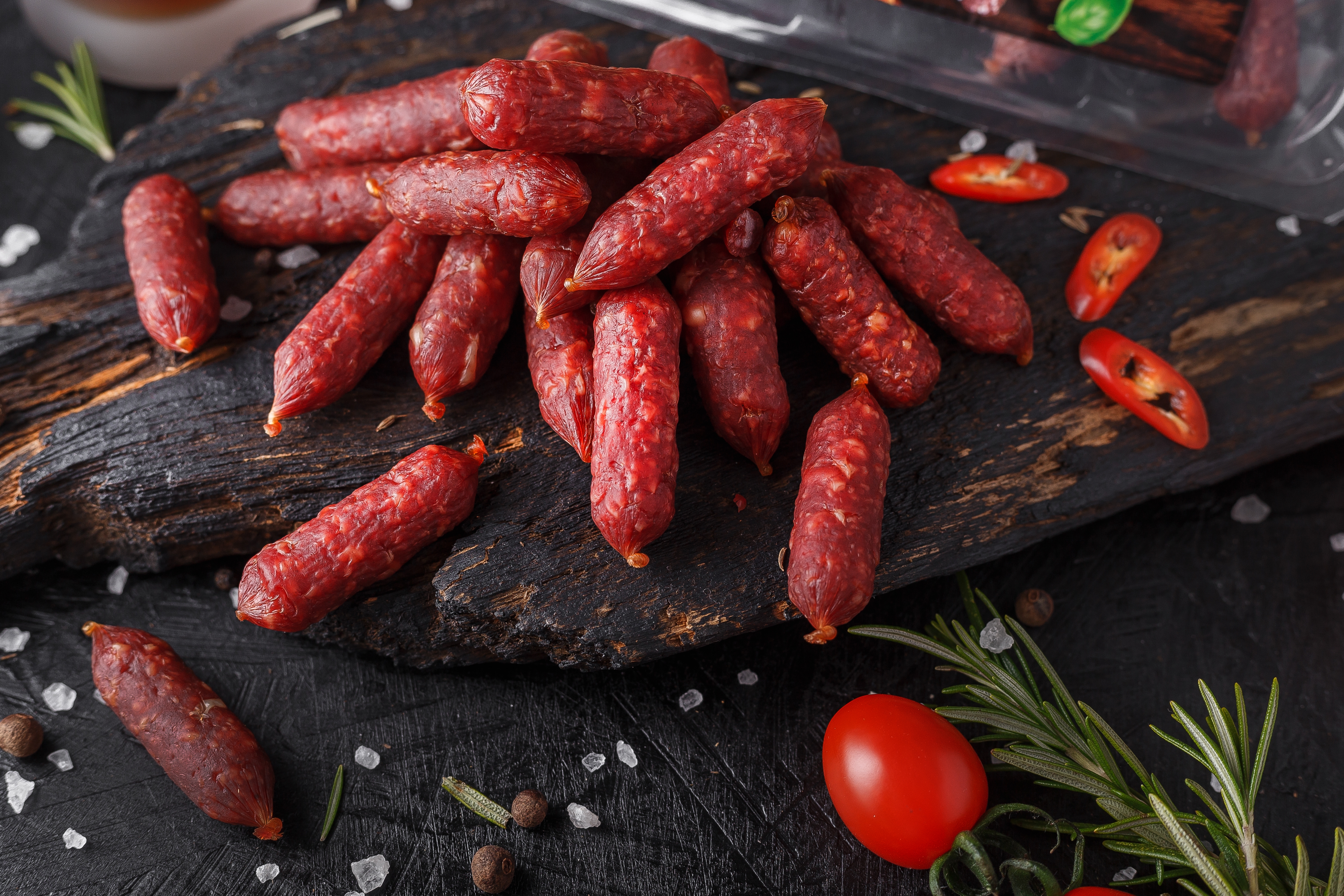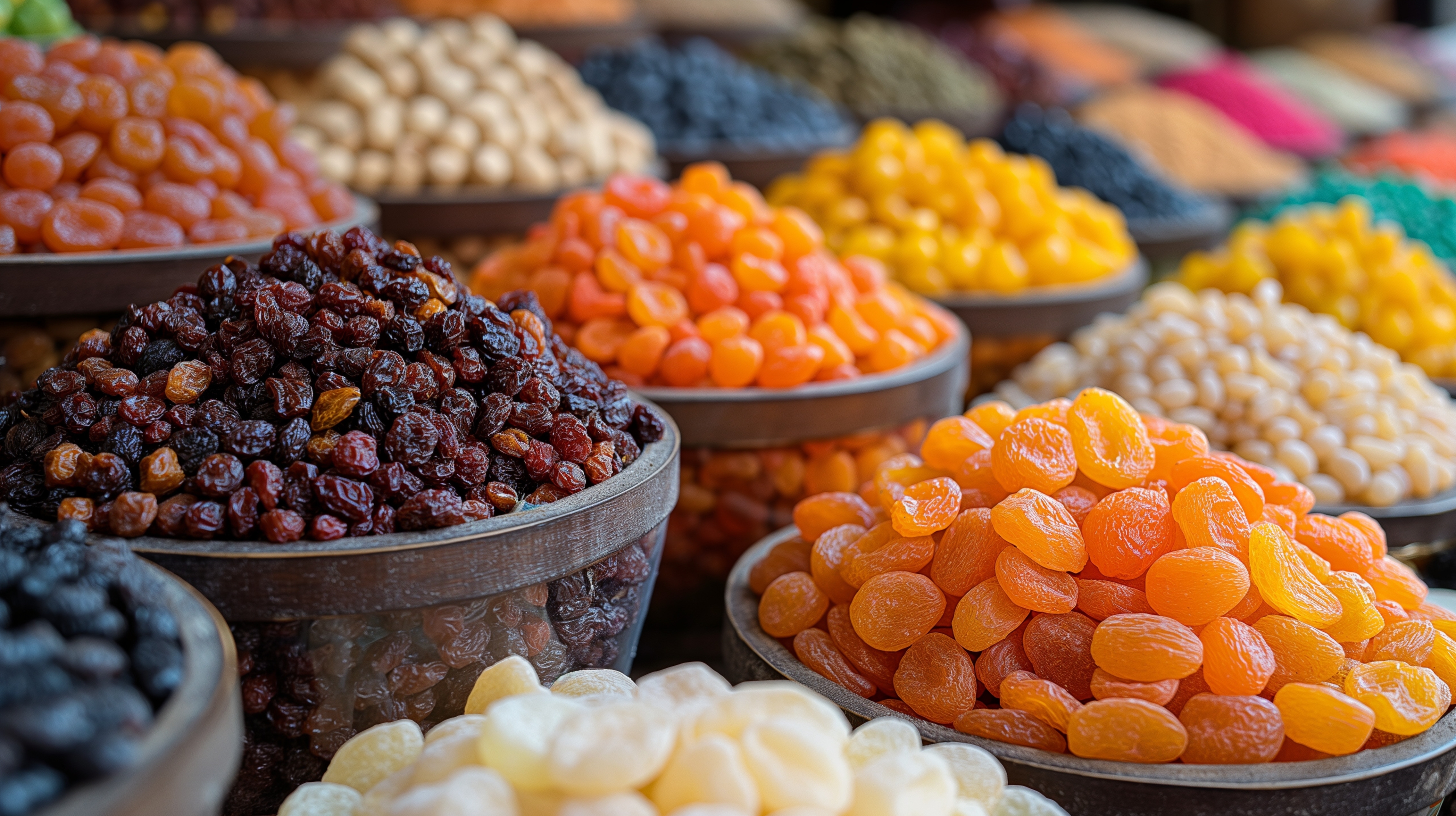Free digital copy
Get Speciality Food magazine delivered to your inbox FREE
Get your free copy
When you’re in the ‘buying seat’, it’s easy to become distracted by all the noise circulating in the food and drink industry. There’s always something shiny and new just around the corner, promising to be to be ‘the next big thing’ that will sweep shoppers off their feet.
At Speciality Food, we’ve always got our finger on the pulse, and we spend a great deal of time exploring innovations and new products, learning from analysts and experts which products are the ones worth investing in.
It can seem as though some trends disappear like a puff of smoke almost as soon as they appear, while others stand the test of time… but for different reasons. The Dubai chocolate trend is one case in point. Originating from TikTok, its current ubiquity is largely down to hyper visibility across social media platforms, leading an increasing number of brands to create their own take on the viral product.
Meanwhile, the concept of ‘health is wealth’ may well have begun on social media, but this ‘trend’ has evolved into a movement that has shaped the eating habits of millions of Brits as well as the food and drink sector that serve them.
Ultimately, there’s only one smart way to approach trends: to consider your audience and what they want to buy. If you can create a story around a current trend that is relevant to your business, go all out, but chasing after ephemeral trends could well turn out to be a fool’s errand – and one that keeps you unsustainably busy, at that.
Ben Alalouff, chief strategy officer for Live & Breathe says that Speciality Food readers should think carefully before adopting trends in their store
Independent retailers should only evolve their offering by selectively embracing trends, guided by genuine consumer insights rather than fleeting hype.
Reacting to every passing fad dilutes brand distinctiveness, but ignoring trends altogether can render retailers disconnected from consumer expectations and market realities.
They should, like a living and breathing organism, observe, learn and nurture continuously, consuming and emitting in a way that benefits their life-force – in this case – their consumers.
Identifying those useful trends involves discerning whether they represent substantial shifts in their consumers’ behaviours or values rather than short-lived novelty.
Hopping on the latest trends isn’t a strategy, but hopping on trends that are hyper relevant to your consumer and their sub-cultures is and will pay the commerce dividends.”
Scott Dixon, MD of food innovation company The Flava People, believes that the opportunities provided by trends can be harnessed with smart storytelling
Retailers can harness food trends and brand partnerships by staying agile and culturally in tune while maintaining alignment with their core values. Acting quickly to launch trend-driven products (especially limited-time offers) can capture consumer interest, but success depends on thoughtful planning and execution. Collaborating with brands that resonate with the target audience adds credibility and emotional appeal, whilst sometimes resonating with key occasions that have strong affinity with these brands (e.g. Guinness & Six Nations/Baileys & Christmastime/Pinch of Nom and January health-kicks, etc). Trends also offer a low-risk way to test new ideas; successful limited editions can be scaled into permanent offerings, while providing real-time insight into consumer behaviour.
Retailers should ensure trend-led products are visually appealing and digital-friendly to maximize shareability on platforms like Instagram and TikTok. In support of brand partnerships, collaborations should be supported by influencer marketing and user-generated content to increase reach. The most effective trend-based strategies connect short-term excitement with longer-term consumer movements – such as linking a viral plant-based product to wider sustainability efforts or integrating nostalgic flavours into broader heritage-themed campaigns.
Offering exclusive access to trend-driven products through loyalty programs or apps also builds brand engagement, creates a sense of community, and encourages repeat visits. Ultimately, by balancing the buzz of the moment with meaningful, value-driven storytelling, retailers can use trends and partnerships to remain relevant, drive growth, and deepen customer loyalty.
Jess Kaye, business director for Chilli (part of IMA), says that it’s important for retailers to keep up on the trend pulse
Strategically, trend watching can help identify emerging opportunities and threats, particularly on a macro level. This will help expand brand strategies and ensure your business stays in touch, relevant and responds to changing consumer priorities.
At a tactical level (activations, promotions), micro and local trends can provide inspiration that will fuel growth and provide stimulus to help understand current challenges from your customers’ perspective.
Not catering to trends or ignoring how they are shaping the world around you risks your business feeling dated. At worst, you could alienate or insult your customers, so whilst you may decide NOT to act on a trend, an awareness of it means you are ready to act, if necessary, for either an opportunity, or to stave off a threat.
Fads tend to be limited to very specific product categories, whereas trends cross category and country boundaries and evolve. Fads are linked to short term movements and rarely involve significant changes to consumer lifestyles. The key thing to remember is that fads don’t last. That doesn’t mean you should ignore them! Fads can help freshen up a brand with some seasonal interest as they peak, but ONLY if investment is low and implementation fast. If you are too slow to act on a fad you will certainly miss the boat.
Unsurprisingly, AI continues to be a key trend, particularly for personalisation, and there has also been a recent rise in experience retail – giving shoppers opportunity to immerse themselves in the features and benefits of the offer.
Read on for insider info around the trends we believe are here to stay – and that Speciality Food readers are in prime position to capitalise on.
There’s no getting away from the vast expansion of the functional drinks sector – nor the positive reception from consumers. Until the last two years, the category was largely dominated by kombucha (expected to grow by 13.8% in the next five years), followed by gut-friendly sodas, which latched onto the gut health conversation, claiming to help drinkers upgrade their internal microflora.
Expansion of both types of drink continues apace – their ongoing success encouraging other brands to join them in the wellness space. We’re seeing interest in protein water, ACV drinks, green tea energy drinks, and in adaptogenic products (particularly those aimed at perimenopausal women) boosted with ashwagandha, mushrooms and minerals such as magnesium.
According to Statista, almost 10% of UK consumers are spending more than £20 per month on functional drinks, so it’s certainly worth considering these products more seriously.

Protein has (for now) replaced gut health as the wellbeing focus of the moment. It’s being talked about everywhere, and by a more diverse demographic of people, beyond gym fanatics. More is being understood and shared about the role of protein in managing weight and blood sugar, and helping to support our muscles as we age.
Dr Rupy Aujla’s most recent book – The Doctor’s Kitchen: Healthy High Protein – has already topped best-seller lists and he, and others in the wellness field, are being very vocal about the benefits of protein right now, which has naturally led to spiked interest in retail. Cognitive Market Research’s data predicts 6% growth in the protein market between 2024 and 2031.While plant protein substitutes have plateaued, as the industry pivots to adapt to consumers preferences towards ‘cleaner’ alternatives, the products thought to benefit most will be high-quality meat, tofu, tempeh, beans, pulses, nuts, anything infused with collagen, snacking salamis and jerky.
A recent report from the American Journal of Preventative Medicine (capturing data from eight countries) found that ultra-processed foods make up a startling 53% of the average British person’s energy intake – second only to the USA (55%). Researchers claim this propensity to rely on heavily processed products could be responsible for thousands of premature deaths.
The UK Government has responded by saying it will continue to double down on ways to minimise the health impact of UPFs here, having already targeted junk food advertising aimed at children, and introduced HFSS regulations.
Consumers are becoming much more aware about the implications of UPF-led diets, paying greater attention to labels and ingredients. In fact, a Facebook group (Reducing Ultra-Processed Foods) set up just months ago, already has nearly 100,000 active members, demonstrating just how important it is for retailers to be mindful of what they offer in a speciality setting.
If there’s one product that swept the floor in artisan retail last year, it was chilli crisp, riding on the coattails of 2023’s hot honey craze. Independents tell us their customers cannot get enough of this umami, spicy condiment. And it’s led shoppers to explore further the deliciously diverse offerings of Asia, as they recreate dishes they’ve eaten in restaurants or seen on social media at home.
Brands tell us their customers value authenticity, natural ingredients, and multifunctionality. Ones to watch include rayu, gochujang, togarashi seasoning, XO sauce, sriracha, ssamjang and kecap manis. We predict a boom in Asian ingredients in 2025, with South American condiments projected to be on the up for 2026 as consumer awareness grows.
.jpg)
What do you reach for when you’re craving comfort food? It’s certainly not chocolate-coated insects, fruit leather bars or a protein shake! While all these products have their place in food retail, especially as consumers think more carefully about wellbeing, health, sustainability and a number of other purchasing considerations, no one working in food and drink can deny the pull that traditional and nostalgic foods have had over the last 12 months.
There’s a growing consumer preference, says Good Food Studio development manager, Gabriel Bray, towards retro products, and those perceived as more ‘wholesome’, likely influenced by an increased awareness of ultra-processed food. “This shift suggests that the recent nostalgia trend isn’t just about sentimentality – it’s also becoming a marker of quality and authenticity,” he says.
Ensuring you follow new trends, while embracing the old, is key in fine food retail today, say insiders. So, alongside those aforementioned insects, be sure to deliver a thread of homely, cosy-feeling lines across categories, showing them just as much love during promotions as the super-flashy boxes of newness.
- Seek out products with traditional and nostalgic branding. Chequers, candy stripes and dots all draw the eye, as do vintage-style tins, and even oldy-worldy typefaces on packaging. Consumers are being drawn to products that will look bring them a sense of cosy comfort when they look in their cupboards or pantries
- Retro puddings are ‘in’. Big, blousy desserts are here to stay and should be a major consideration in your café or foodservice operation, deli counters and even the freezer aisle. Try sampling roulades, gateaux, billowing lemon meringue pies, trifle pots, blancmanges and cream-laden Victoria sponges. And create some fun inspiration around your product lines on social media – maybe showing how to use bottles or jars of chocolate sauce and local ice cream to make banana splits or sundaes at home
- When it comes to snacks, although shoppers are being drawn in by wellbeing claims, they’re still totally on board with the classics, and crisps will never stop being part of their ‘treat me’ experience. The flavours most resonating at the moment tally with tradition – consumers are being drawn to meaty varieties especially, from good old roast beef and mustard to ham or chicken. Don’t forget to stock up on prawn cocktail too, with some excellent premium options from artisan makers now available
- The rattle of a biscuit tin is so evocative of many people’s childhood memories. Remind shoppers these aren’t just for gifting occasions by putting them front and centre in tasting sessions, maybe with little cups of tea for dunking. Show them how gift tinned biscuits can play a part in their self-treating experience
- Sweets are so much more appealing decanted from big glass jars, or sold in miniature jars reminiscent of traditional candy shops. If you have space and resource, set aside an area for your own tuck shop, or pre-pack pick ‘n’ mix sweets into decorative bags as a grab and go option

Credence Research thinks there will be a 5.78% growth in the UK dried fruits market between 2024 and 2032, while Statista believes the nuts market will grow by 5.55% between 2025 and 2030.
We’ve seen dramatic changes in both of these snacking categories in the last 12 months alone, with new products constantly becoming available. Not only are most of them HFSS compliant (creating better opportunities for grab and go impulse purchases in larger stores) but they lean heavily into customer preferences for healthier snacking that can help them boost their fibre, vitamin, mineral and protein intake.
Statista says sustainably sourced and organic nuts are worth stocking as their trajectory for consumer interest rises. While Mintel’s data shows premium options (luxury chocolate coated or seasoned nuts, for example) will prove their value to retailers, as 55% of consumers say they would pay more for gourmet snacking products.
Consumers can now uncover a wealth of nut snacks whatever their dietary preferences, whether they’re keen on their inherent health benefits or seeking indulgence. Nuts can be coated in fine quality chocolate or presented as part of a heart-healthy snack mix; the choices are endless.
There’s a whole host of other options on the market, too, from plant-based milk alternatives to Asian-inspired condiments and sauces, and nut and seed-heavy granolas and muesli, meaning that every meal of the day provides opportunities to go nuts.
Almonds, cashews, hazelnuts and pistachios are proven strong sellers, but keep an eye out for lesser-known options to satisfy your shoppers’ taste for new.
Nuts also have the ability to go viral; Dubai chocolate being a prime example. A chocolate bar filled with pistachio creme and crispy knafeh, created by Fix Dessert Chocolatier became a worldwide sensation in 2024 and spawned all manner of iterations – including in the speciality food market.
Dubai chocolate hasn’t only inspired chocolatiers and mainstream retailers including Marks & Spencer to create their own version of the treat; pistachio has become a trending flavour across the board – from bakery products to hot drinks, as well as pizza toppings and in the form of pistachio pesto – and this trend is set to stay for months to come, as the season for pistachio ice cream and pistachio topped Burrata beckons.

There can be no doubt about it – good health is trending. British shoppers are more conscious than ever about the impact that what they consume has on their overall health, and while a few years ago weight loss was the prime driver for healthy food choices, there’s now a plethora of health concerns that products are aiming to solve for shoppers.
The market is awash with good-for-you products, but it’s not always easy to see the wood (genuine article) for the trees (products that shout about their trendy credentials without delivering).
Natural whole foods are a great way to go – no long ingredients lists to decipher, and potentially easy to source locally (therefore offering a low environmental hit), think simple and seasonal for optimum effect. ‘Eat the rainbow’ is a good rule of thumb for fibre hunters, and the smart indie retailer stocks slightly more unusual produce to stand out from the supermarkets, so look beyond the classics to impress health-savvy shoppers.
As arguably the biggest trend in wellness right now, it’s well worth investing in gut health-boosting food and drink. With many of the products on the market ideal for fine food shoppers thanks to their quality credentials and eye-catching branding, with a little education – think POS and recipe suggestions – fermented food and drink could be a profitable way to welcome in new health-conscious consumers.
Here, Annie Davis, clinical nutritionist at Body Fabulous Health Clinic, registered Nutritional Therapy Practitioner and member of British Association for Nutrition & Lifestyle Medicine (BANT) & CNHC recommends must-stock, health-giving products:
Kefir: A fermented drink made from milk. It’s like yogurt but with a thinner consistency and a tangy flavour and contains more strains of probiotics. Kefir is great for gut health and digestion.
Kimchi: A Korean dish made from fermented vegetables (often cabbage and radishes) with spices and seasonings. It’s packed with probiotics and can support digestion and immune function.
Sauerkraut: Fermented cabbage that’s rich in probiotics, fibre, and vitamin C. It’s great for gut health and can aid in digestion.
Kombucha: A fermented tea beverage made with tea, sugar, and a symbiotic culture of bacteria and yeast (SCOBY). Kombucha is rich in probiotics and antioxidants, supporting both gut and immune health.
Miso: A traditional Japanese seasoning made from fermented soybeans, rice, or barley. Miso is a good source of probiotics and can support gut health and digestion.
Sourdough Bread: Sourdough is made through a natural fermentation process where yeast and lactic acid bacteria break down the flour. It’s easier to digest than regular bread, and the fermentation process lowers the glycaemic index, making it a better choice for blood sugar regulation.